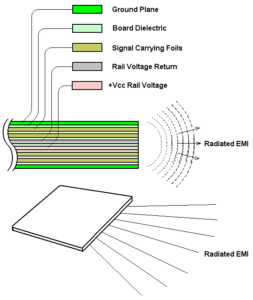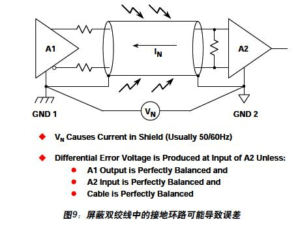EMI (Electromagnetic Interference) and RFI (Radio Frequency Interference) are becoming increasingly problematic for many industries. To solve this issue, the use of custom EMI & RFI shielding covers has become a popular solution. The production of these covers requires the use of an etching machine. In this article, we will explore the reasons why an etching machine is necessary, the production steps that can be done using an etching machine, the advantages of etching EMI & RFI shielding, metal grades suitable for EMI & RFI shielding, applications of EMI & RFI shielding, and the etching machine’s tolerance values. 
Why an etching machine is necessary for EMI & RFI Shielding
EMI & RFI shielding involves creating a barrier to electromagnetic and radio frequency interference to protect sensitive equipment from unwanted signals. To produce custom EMI & RFI shielding covers, an etching machine is necessary. The etching machine enables the precise etching of a metal sheet with intricate patterns of fine lines and shapes, which are necessary for the shielding cover to function correctly.
Steps of EMI & RFI Shielding production done by etching machine
The etching machine is used in the first steps of production, which include:
- Preparing the metal sheet by cleaning and masking the areas where the metal needs to be protected.
- Coating the metal with a photosensitive resist, which hardens when exposed to UV light.
- Exposing the metal to UV light through a mask with the desired pattern.
- Developing the resist by washing away the unexposed portions, leaving behind a stencil.
- Etching the metal using a chemical solution that dissolves the exposed areas of the metal, leaving behind the desired pattern.
Etching EMI & RFI Shielding advantages

Etching EMI & RFI shielding covers provides several advantages, including:
- Precise and accurate patterns with tight tolerances, ensuring optimal shielding effectiveness.
- Cost-effective production with high repeatability, reducing the need for manual labor and increasing efficiency.
- Flexibility to produce complex shapes and patterns to suit specific applications.
- Versatile for use with various metals, including copper, brass, and nickel-silver.
Metal Grades for EMI & RFI Shielding
When it comes to EMI & RFI shielding, not all metals are created equal. The most commonly used metals for EMI & RFI shielding are copper and its alloys, including brass and bronze. These metals have high electrical conductivity, making them effective for absorbing and redirecting electromagnetic and radio frequency waves. Other suitable metals include aluminum, stainless steel, and nickel-silver.
EMI & RFI Shielding Applications in Industry
EMI & RFI shielding covers are used in a wide range of industries, including:
- Aerospace and Defense: Shielding sensitive equipment from interference, such as navigation systems and communication devices.
- Medical: Protecting medical devices from electromagnetic interference to ensure accurate readings and safe operation.
- Telecommunications: Preventing interference between devices and networks to maintain reliable communication.
- Automotive: Shielding electronic systems from interference, such as engine control units and infotainment systems.
Difference between traditional sheet metal precision processing VS Chemical etched sheet metal processing
VECO’s video to learn what metal etching is.
Comments related to etching technology:
From @chadr2604: There is another way it involves stacking many layers of very thin material with an There is another way it involves stacking many layers of very thin material with an adhesive, pressing the stack, then either stamping or punching the blank then heating it to release the adhesive. The parts will not be as accurate the tolerance is limited to about .002″ but if its good enough its much faster.
From @chadr2604: If you try to cut that stack with a laser you will just start a fire we had an aluminum fire trying that.
-
- Principle: Traditional sheet metal fabrication typically involves mechanical processes such as cutting, bending, and punching to shape and form metal sheets. Metal etching by Metal Etching Machine , on the other hand, is a chemical process that uses specialized etchants to selectively corrode the metal surface, achieving precise etched patterns and features.
- Accuracy and Complexity: Etching offers advantages in terms of precision and complexity. By controlling the composition, concentration, temperature, and etching time of the etchant, extremely fine etching can be achieved with accuracy down to sub-micron levels. Additionally, etching allows for the creation of intricate geometries, microstructures, and patterns that may be difficult to achieve using traditional mechanical methods.
- Processing Speed and Cost: Etching generally offers faster processing speeds, particularly in large-scale production. In comparison, traditional mechanical fabrication methods may require more time and cost to achieve the same level of precision and complexity.
- Materials Compatibility: Etching techniques are applicable to a range of metal materials, such as copper, aluminum, stainless steel, and titanium. Traditional sheet metal fabrication methods may have limitations when it comes to certain materials or thicker metal sheets.
- Design Flexibility: Etching provides greater design flexibility. By incorporating techniques like photolithography or screen printing during the etching process, complex patterns and structural designs can be achieved. This makes etching suitable for applications in microelectronics, optical devices, microfluidic devices, and more.
Introduce the Etching Machine for EMI & RFI Shielding Tolerance Values
The etching machine used for producing EMI & RFI shielding covers is a high-precision tool with tight tolerance values. The machine can etch patterns as fine as 0.018mm, with a positional accuracy of 0.01mm. This level of precision ensures that the shielding covers are effective in blocking electromagnetic and radio frequency interference. If you have any questions about etching for EMI & RFI Shielding or need assistance with your project, please do not hesitate to contact us.
Modern precision sheet metal fabrication includes a common technique known as etching, which differs from traditional sheet metal fabrication in several ways. Here are some key differences between etching and traditional precision sheet metal fabrication:
-
- Principle: Traditional sheet metal fabrication typically involves mechanical processes such as cutting, bending, and punching to shape and form metal sheets. Metal etching by Metal Etching Machine , on the other hand, is a chemical process that uses specialized etchants to selectively corrode the metal surface, achieving precise etched patterns and features.
- Accuracy and Complexity: Etching offers advantages in terms of precision and complexity. By controlling the composition, concentration, temperature, and etching time of the etchant, extremely fine etching can be achieved with accuracy down to sub-micron levels. Additionally, etching allows for the creation of intricate geometries, microstructures, and patterns that may be difficult to achieve using traditional mechanical methods.
- Processing Speed and Cost: Etching generally offers faster processing speeds, particularly in large-scale production. In comparison, traditional mechanical fabrication methods may require more time and cost to achieve the same level of precision and complexity.
- Materials Compatibility: Etching techniques are applicable to a range of metal materials, such as copper, aluminum, stainless steel, and titanium. Traditional sheet metal fabrication methods may have limitations when it comes to certain materials or thicker metal sheets.
- Design Flexibility: Etching provides greater design flexibility. By incorporating techniques like photolithography or screen printing during the etching process, complex patterns and structural designs can be achieved. This makes etching suitable for applications in microelectronics, optical devices, microfluidic devices, and more.
Introduce the Etching Machine for EMI & RFI Shielding Tolerance Values
The etching machine used for producing EMI & RFI shielding covers is a high-precision tool with tight tolerance values. The machine can etch patterns as fine as 0.018mm, with a positional accuracy of 0.01mm. This level of precision ensures that the shielding covers are effective in blocking electromagnetic and radio frequency interference. If you have any questions about etching for EMI & RFI Shielding or need assistance with your project, please do not hesitate to contact us.
